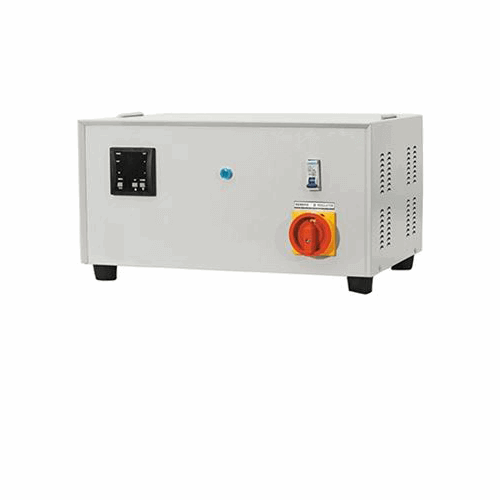What is Voltage Stabilizers
VOLTAGE STABILIZERS
What is Voltage Stabilizers
It is an electrical appliance which is designed to deliver a constant voltage to a load at its output terminals regardless of the changes in the input or incoming supply voltage. It protects the equipment or machine against over voltage, under voltage, and other voltage surges.
Although the Uninterruptible Power Supplies can both regulate the voltage and feed the loads for a certain period of time during the power outage, the Regulator does not protect against power outage . Therefore, it is different from Uninterruptible Power Supplies. However, since it is a more economical solution compared to Uninterruptible Power Supply, they are preferred in areas that do not require urgent back-up and uninterrupted electricity.
Which types Stabilizers are there?
1. Servo Voltage Stabilizer
2. Static Voltage Stabilizer
Servo Voltage Stabilizer
Servo Voltage Regulator basic block diagram is shown below.

Servo Controlled Voltage Regulator consists Buck-Boost Transformer, Adjustable Auto Transformer, Servo Motor that provides voltage change of auto transformer and electronic control circuit of this motor.
The servo motor moves in a perfect way so that the proper voltage can be observed at the primary coil of the Buck-Boost transformer. The output voltage of the servo stabilizer is the voltage across the secondary coil of the buck-boost transformer. This process takes place until it achieves correct input voltages.
This type of voltage stabilizer is used more in industry.
Static Voltage Stabilizers
Static Voltage Regulator basic block diagram is shown below.

Static Voltage Regulator does not have moving parts like motor mechanism like Servo Regulators. In Static Regulator, power electronics converter circuit including SCR or IGBT is used to achieve voltage regulation instead of a variac. It is possible to produce greater accuracy and excellent voltage regulation with these regulators compared to the servo type, and the typical regulation is ± 1%.
It essentially consists of buck boost transformer, SCR or IGBT power converter (or AC to AC converter), and microcontroller or DSP based controller. Microprocessor controlled converter generates the appropriate amount of voltage by pulse width modulation technique, and this voltage is supplied to the primary of the buck boost transformer. The converter produces the voltage in such a way that it can be in phase or 180 degrees out of phase incoming line voltage, in order to perform adding and subtracting voltages during fluctuations.
These stabilizers are very popular compared with tap changing and servo controlled stabilizers because of the wide variety of advantages such as compact size, very fast correction speed, excellent voltage regulation, no maintenance due to the absence of moving parts, high efficiency and high reliability.
Although Servo Regulators are larger and less voltage correction than Static Regulators, they are preferred because they are simpler, easy to use and most importantly more economical.

